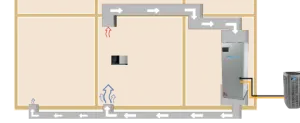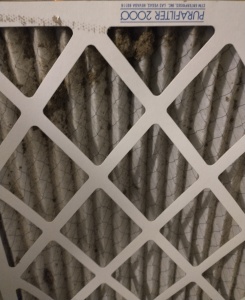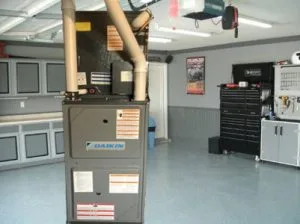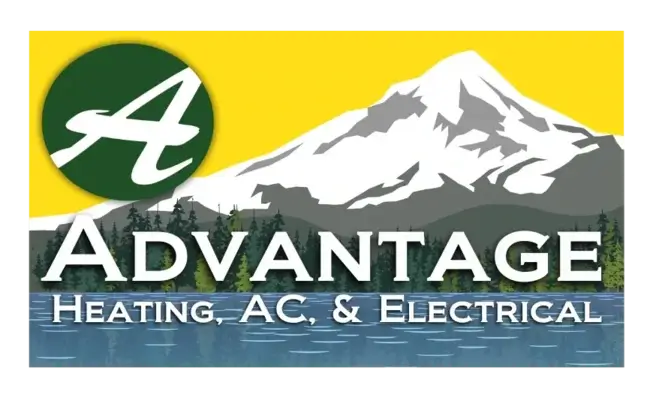Why Does Your Furnace Keep Turning Off?
Nobody likes it when their stuff breaks. You can get frustrated when something you invested a lot of money in does not work like it’s supposed to. Even more so if that something handles your comfort and wellbeing. You would be well within your rights to be angry if, on the first wintry day of the year, you turn your furnace on and it does not work. So why does your furnace keep turning off?
Several things could cause your furnace to short cycle. Short cycling is when your furnace runs for only a short amount of time when it should run for longer. This can seem like your furnace is constantly turning off and on.
In this post, we’ll explain why short cycling is bad and give you tips on how to diagnose what is wrong. We’ll tell you what problems you can or can’t fix by yourself. That way, you can have an informed conversation with your HVAC technician.
Negative Effects from Short-Cycling
The obvious problem with short cycling is that it does not heat your home properly. However, that’s not the only reason that it’s bad. It can have a greater impact on your furnace and your wallet.
Energy Bill
Furnace’s use more energy to turn on than when they run for their cycle. If a furnace is constantly turning off and on, it’s going to use a surge of energy every time it turns on.
When that is happening, you’re going to notice a large spike in your energy bill.

Equipment Damage
A furnace runs for a specific length of time. This is because every time a furnace turns on, it experiences the most wear on its parts.
If a furnace can maintain temperature normally, it will not have to turn on frequently. However, if a furnace is running for shorter cycles and is turning on more often, it will damage itself.
Uneven Heating

The most immediate problem you will experience from a furnace short cycling is uneven heating. The severity and actual amount of heating that enters your room will depend on the cause of the problem.
You may end up with one room that is comfortable or even too hot, while the other rooms of your home are freezing.
Another possibility is that you have warm spots directly around your vents. Then that heat quickly dissipates, and you have small pockets in each room that hold warmth.
Either way, it’s not a pleasant experience. So, let’s look at some of the common causes of this issue and see how we can help.
An Airflow Problem Could Cause Your Furnace to Keep Turning Off
Airflow is the most common issue we see with furnaces. Mostly, airflow problems are preventable and quickly remedied.
A few things could happen if your furnace cannot get or produce sufficient airflow.
- The furnace is producing warm air, but it’s getting trapped in the ducts.
- The furnace’s heat exchanger is overheating from back up air.
Both problems can cause damage to your HVAC equipment and can make your home uncomfortable.
Below are some of the root causes of airflow problems.
Dirty Air Filter
This is a very common occurrence and is very easy to fix. If your furnace’s air filter is dirty, air cannot get through.
Turn your furnace off and check the air filter to see if it is visibly dirty. If that is the case, swing by your local hardware supply store, supermarket, or even check online. Buy a new filter and throw out the old one.
You should notice improved air flow and indoor air quality in your home.

Clogged Vents or Duct Work
If debris or build up are clogging your vents, the air from your furnace will get trapped before it can enter your home. Usually, your ducts will have to be extremely dirty for this to be the case. It’s also possible that part of your duct work has broken or collapsed.
Your best bet is to schedule a duct cleaning from a company that will do more than just take a shop vac to your registers. A high-quality duct cleaning service will also repair broken ducts as long as it is not too severe, and they have the equipment on hand.
If you think this might be the case, we have an article showcasing the signs that you need to have your ducts cleaned.
Closed Vents
It’s possible that your issue could be as simple as your registers and vents being left closed. Obviously, air will not come out of a close vent.
Just having one or two registers closed in your home could reduce airflow by up to 20%.
Go through your home and make sure that all of your vents and registers are open. If you have a manual damper controlling the flow between both floors, make sure that it is open as well.
Blockage in the Exhaust
If your furnace uses natural gas or oil, it has an exhaust. This exhaust is where all the byproducts and fumes go after the furnace has burned its fuel to create heat.
It is possible that something has blocked the exhaust, and that is causing the exhaust to back up into your furnace. It could be soot (if it’s an oil furnace), a bird nest, fallen tree limbs, or any other number of things.
If your furnace is being serviced annually each fall, the technician should be able to detect and remove any blockage. However, if none of the previous causes seem to be the case, this is the point where you should call your local HVAC company.
A blocked exhaust can be a series issue. The backed-up exhaust can damage your furnace and puts you at risk of a carbon monoxide leak.
Does Your Furnace Keep Turning Off Because it was Installed Incorrectly?
It’s also possible that your furnace is just the wrong size or that the installer incorrectly installed your furnace.
Furnace Too Big
A sales representative should always perform a load calculation and tailor your HVAC system to your needs. If they did not, then your furnace might be too big.
If your furnace is too big, it will short cycle almost every time it comes on. A furnace that is too large has too much power for the amount of space it needs to heat. All the power of the furnace will blast your home and heat it up far too quickly.

Your thermostat will detect that sudden change in temperature and tell your furnace to turn off. Meanwhile, the other rooms that don’t have a thermostat might still be cool or might even be blisteringly hot.
Heat needs to spread gradually through your home in order to keep the temperature even. If that is not happening, then you will find the temperature in your house can vary wildly from room to room.
Find out how many BTUs your furnace has and the square footage of your home. Contact a respectable performance-based HVAC company and ask them if it sounds like your furnace is too large. You may need to replace your furnace in order to have a comfortable home and save money on energy.
Poor Thermostat Placement
Another possibility is that your thermostat is in a poor location. If your thermostat sits over a vent, it will get hit by the hot air before it has time to spread throughout your home.
If this is the case, your thermostat will need to be moved to a different location.
Flame Sensor Wear and Tear
It is possible that something is covering your furnace’s flame sensor, or natural wear and tear damaged it. The flame sensor is a safety mechanism that tells your furnace to turn off if it does not detect a flame.
This is important because it stops the furnace from pulling in fuel if it’s not being burned to create heat. The sensor stops potential gas leaks if everything works correctly.
If the sensor is working but can’t detect a flame, it will tell the furnace to shut off. This could happen even if the rest of the furnace works perfectly fine.
This is another problem that a skilled HVAC technician can detect and repair during an annual service.
Who Are Advantage Heating & Air Conditioning, LLC?
We are your local HVAC Experts out of Salem, Oregon. We hope that this post gave you the information you need to keep your furnace running. If you have other questions about HVAC systems, check out our other blogs. To learn more about who we are and how we can help you, visit our website and follow us on social media – we’re here when you need us!
Here are some others services:







